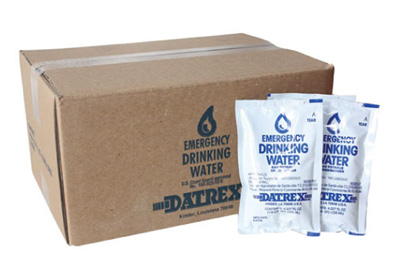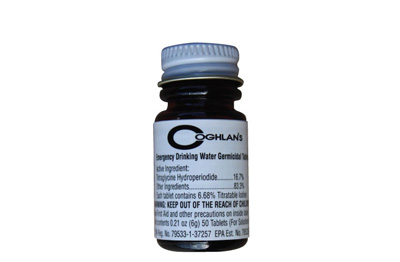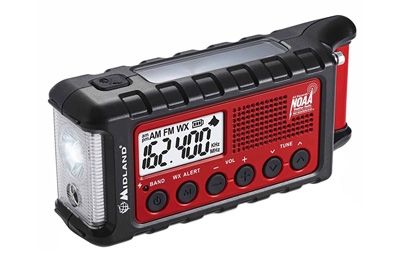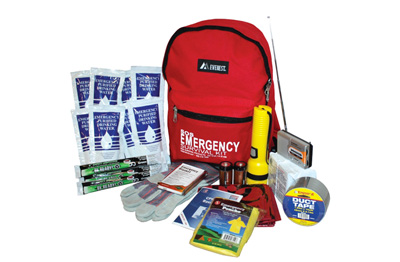
Good Better Best ProductsWednesday, March 6, 2019 Our customers often ask us for recommendations, particularly when it comes to the basics of emergency preparation. We believe that everyone can and should be adequately equipped to handle the unexpected, and that proper preparation can start with just a few essential items. We offer a wide range of emergency supplies at various price points. Here's what should be on your list: Drinking Water PreparationGood:Datrex Drinking Water Foil Pouches Water is essential for life. When preparing for the worst, stock water first and foremost. Datrex drinking pouches contain just over four ounces of water per serving. Each portioned package of water has a five-year shelf life and is Coast Guard approved for safety. Keep these affordable water pouches in your home, car or cabin in the event that other sources of water are not available. Better:Water Purification Tablets If water is available but isn't safe to drink, these affordable tablets are a must. Packaged drinking water will eventually run out in a large-scale disaster, and if you're preparing for the worst, make sure you stock these tablets to treat water when water treatment plants aren't. These tablets are also pragmatic in camping and hiking scenarios where clean drinking water may become scarce. Treat up to 25 quarts of water against giardia and most other microorganisms. Best:Rain Collection Barrel In an emergency, water may be difficult to come by. A true survivalist knows that using the resources that are naturally available are a best bet for long-term sustainability. If a disaster turns into a nationwide or a global crisis, running water will likely be an uncertain commodity. Collecting runoff in a barrel during a rainfall will allow you peace of mind during a crisis. During a heavy rainfall, you'll be able to collect up to 600 gallons of water with the proper equipment. A functioning gutter or downspout will funnel water to your storage containers, while a filter on top keeps out leaves and debris. Keeping wildlife including birds and lizards out of your water will prevent collected water from becoming contaminated. Fire ProtectionGood:ABC Fire Extinguisher Every home should have one ABC fire extinguisher in every major room of the house, including the bedrooms and the kitchen. An ABC extinguisher can tackle all three classes of the most common household fires, which is important since only one class of fire can be tackled using water. Fires fueled by grease, gasoline or electrical equipment cannot and should not be quenched with water, making an ABC extinguisher the only safe solution. An ABC extinguisher uses monoammonium phosphate, which won’t conduct electricity or scatter grease fires further. These fire extinguishers meet nationally recognized standards for safety and come with a 10-year warranty. Better:10-Year Ionization Smoke Alarm In addition to a fire extinguisher, every home should have a functioning alarm system to help you and your family detect and escape fires before they burn out of control. An ionization smoke alarm is the most affordable smoke detector option on the market, and should be installed in every major room of the house. First Alert's 10-year alarm contains a lithium battery that's designed to last 10 years without maintenance. Test your alarm once every six months to ensure it's functioning properly. Best:
10-Year Photoelectric Smoke & Co2 Combination Alarm
Since most deaths from fires occur due to smoke inhalation, installing the right kind of smoke detector is of the utmost importance. A photoelectric fire alarm such as this First Alert alarm detects smoke using a light sensor. This means that when smoke particles scatter the light inside its chamber, an alarm immediately goes off.
Emergency CommunicationGood:NOAA Emergency Crank Radio with Flashlight When other modes of communication fail, Midland’s hand-crank radio will allow you to stay up to date on important weather and emergency information in real time. This radio receives alerts from the National Oceanic and Atmospheric Administration, and can additionally be used to receive AM and FM radio signals. To send messages, this radio offers a built in Morse Code beacon, which can be activated to flash a continuous SOS signal. Better:Midland Two-Way Radios - 22 Channel These short-range walkie talkies can connect with other FRS or GMRS two-way radios via 22 channels. Use the channel scan to check for activity during an emergency, or communicate freely with your family or response team. Each walkie talkie includes a rechargeable power pack. Four AAA batteries can be used to back up power for longer usage when traditional power sources aren't available. Midland GMRS 50 Channel Radios Connect easily and effectively during all types of events. These walkie talkies remove background noise, offer call alerts and use a roger beep to maximize communication. Best:Midland GMRS 50 Channel Radios Get even more out of your walkie talkie with these radios. A clear battery indicator lets you know when you can talk freely and when it's time to conserve power. Each radio comes with one rechargeable battery pack, which can be backed up with four AA batteries. Each battery pack is designed to provide up to 12 hours of life. With a clear communication range of up to 36 miles, these radios offer a safe and affordable solution for a wide range of applications. Each radio features 50 GMRS channels and 28 channels with pre-programmed privacy codes. Keep up with weather alerts and important emergency news with the built in Weather Scan feature, which finds and broadcasts your nearest NOAA station. Emergency KitsGood:1-Person Fanny Pack Kit Stocking an emergency kit is a quick, easy and affordable way to take charge of your preparedness and planning. A fanny pack kit contains several convenient items that everyone should keep on hand. This kit is designed to sustain one person for three days in the event of a sudden emergency. In addition to a 2,400-calorie food bar and 25 ounces of water, the kit also contains one emergency blanket and a range of first aid essentials such as alcohol wipes and non-aspirin pain killers. Supplement this kit with additional water pouches to ensure you can stay adequately hydrated longer. Better:
Individual Auto/Emergency Survival Kit
A more robust version of the fanny pack, this auto emergency kit contains everything that's already included in our basic pack, plus a few other extras. In addition, you'll get important essentials such as a flashlight and emergency radio.
Best:1-Person Deluxe Emergency Survival Kit This affordable pack contains everything you'll need for the first 72 hours of survival. Each Deluxe kit contains 3,600 calories and 76 ounces of clean drinking water. In addition to a variety of first aid products such as alcohol wipes, antibiotic ointments and bandages, this kit also contains waste bags, light sticks, rain gear, gloves, a utility knife and more. We've thought of everything when preparing this emergency kit for you. The Deluxe kit includes everything you'll need to sustain one person for three days, from hydration to items for proper warmth and visibility. Stow it in your car, at home or at your desk at work. |


 Most homes contain ionization detectors, which are cheaper to install and therefore more popular. These types of detectors respond to smoke when particles disrupt the flow of ions in its chamber.
Both types of smoke alarms work well in high-heat, fast-flame fires, however, when it comes to the more common smouldering fires that produce the kind of smoke that kills, an ionization detector falls behind.
Keep your family safe day and night with a combination alert that sounds as soon as a danger is present.
Most homes contain ionization detectors, which are cheaper to install and therefore more popular. These types of detectors respond to smoke when particles disrupt the flow of ions in its chamber.
Both types of smoke alarms work well in high-heat, fast-flame fires, however, when it comes to the more common smouldering fires that produce the kind of smoke that kills, an ionization detector falls behind.
Keep your family safe day and night with a combination alert that sounds as soon as a danger is present.
 Everything is contained in a convenient nylon over-the-shoulder bag.
Everything is contained in a convenient nylon over-the-shoulder bag.






